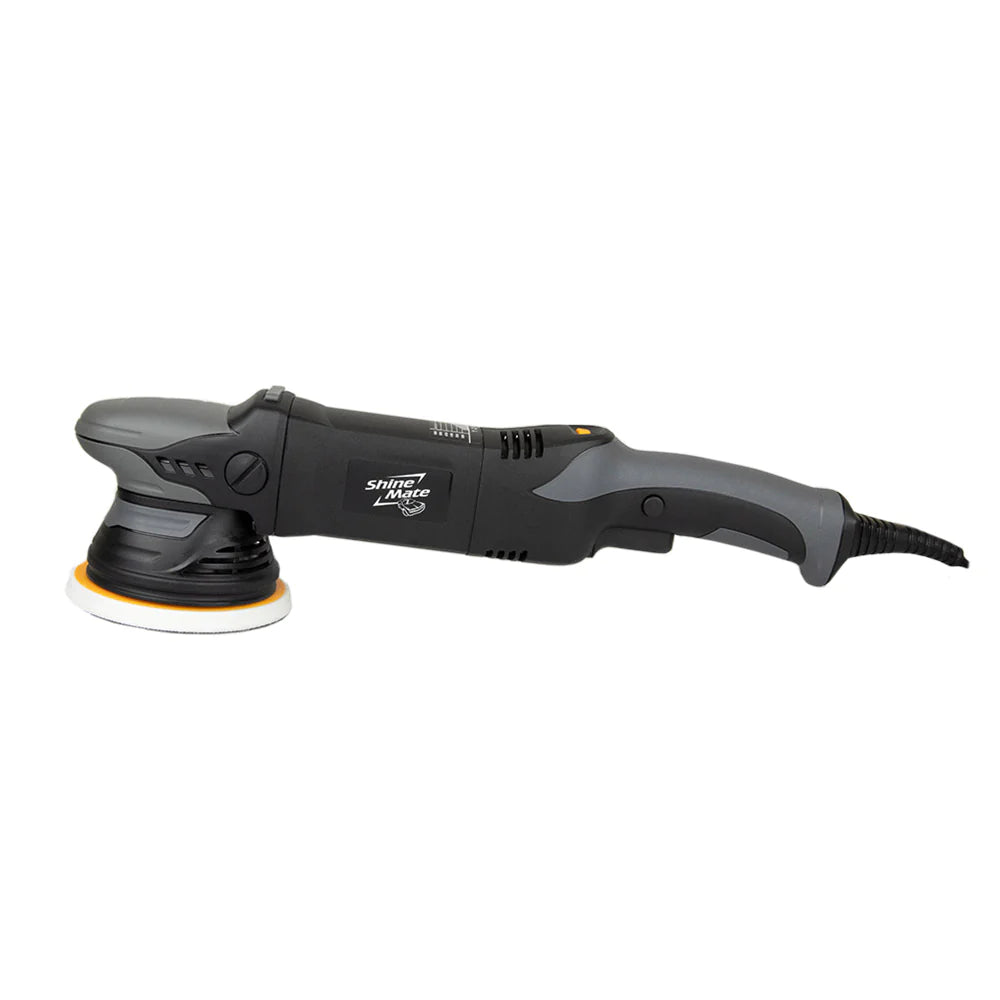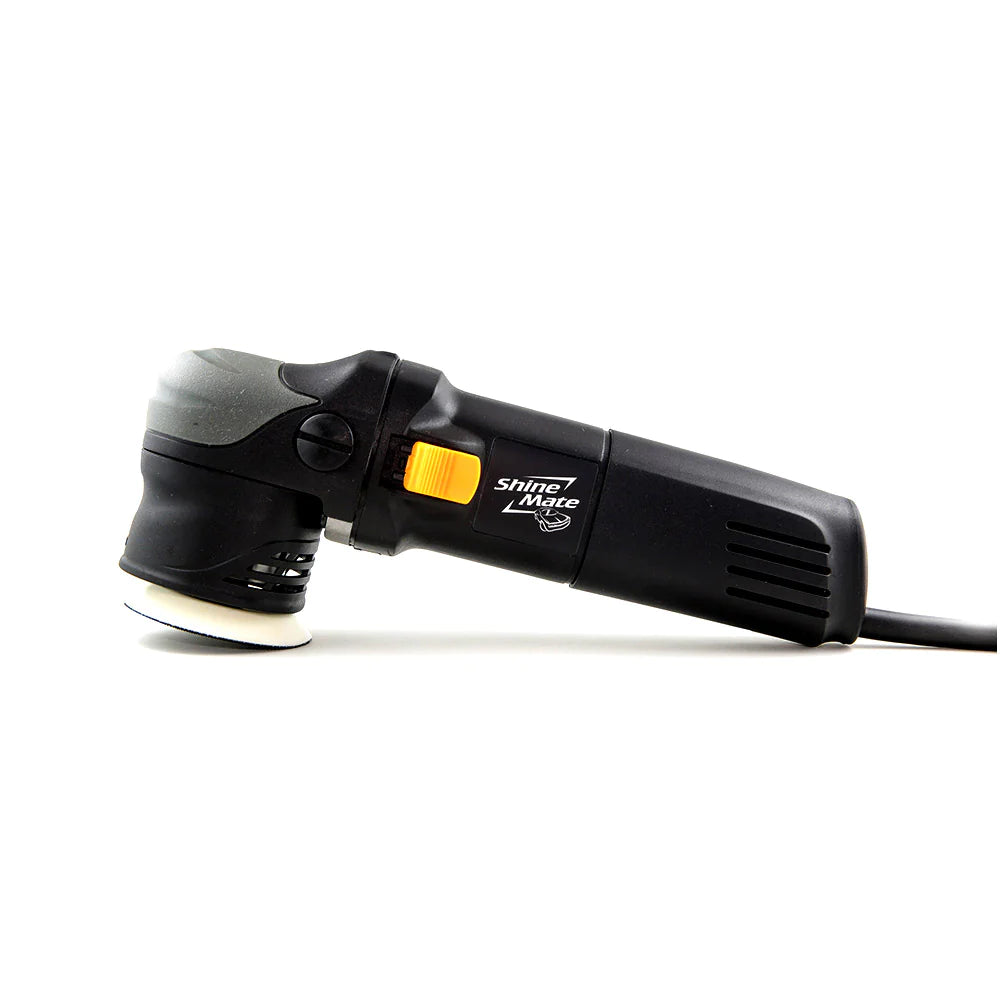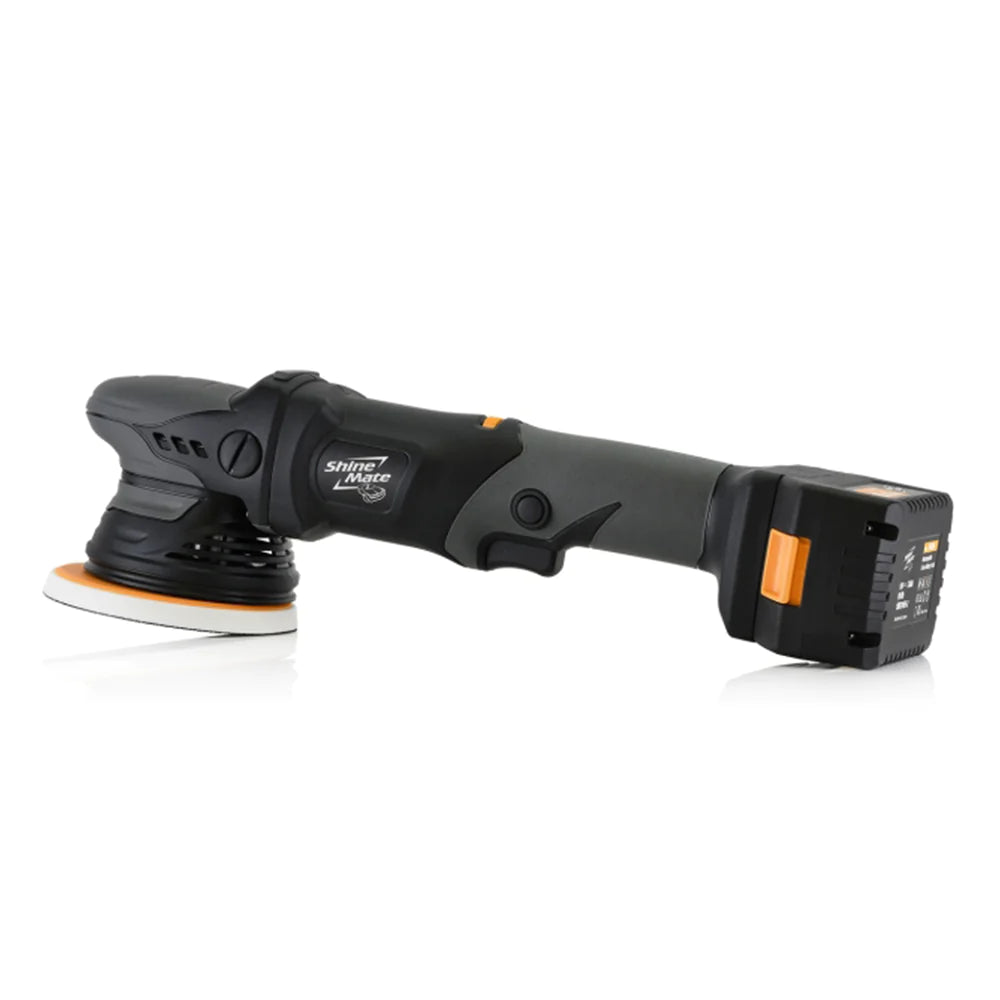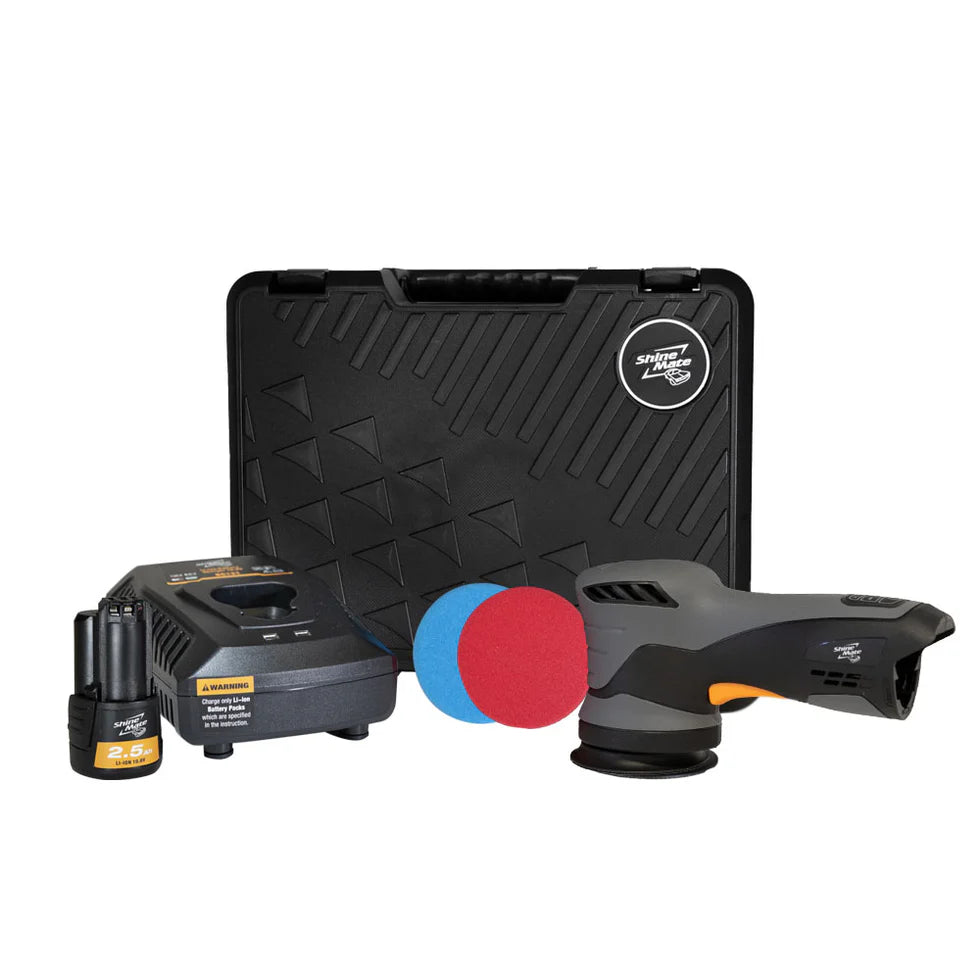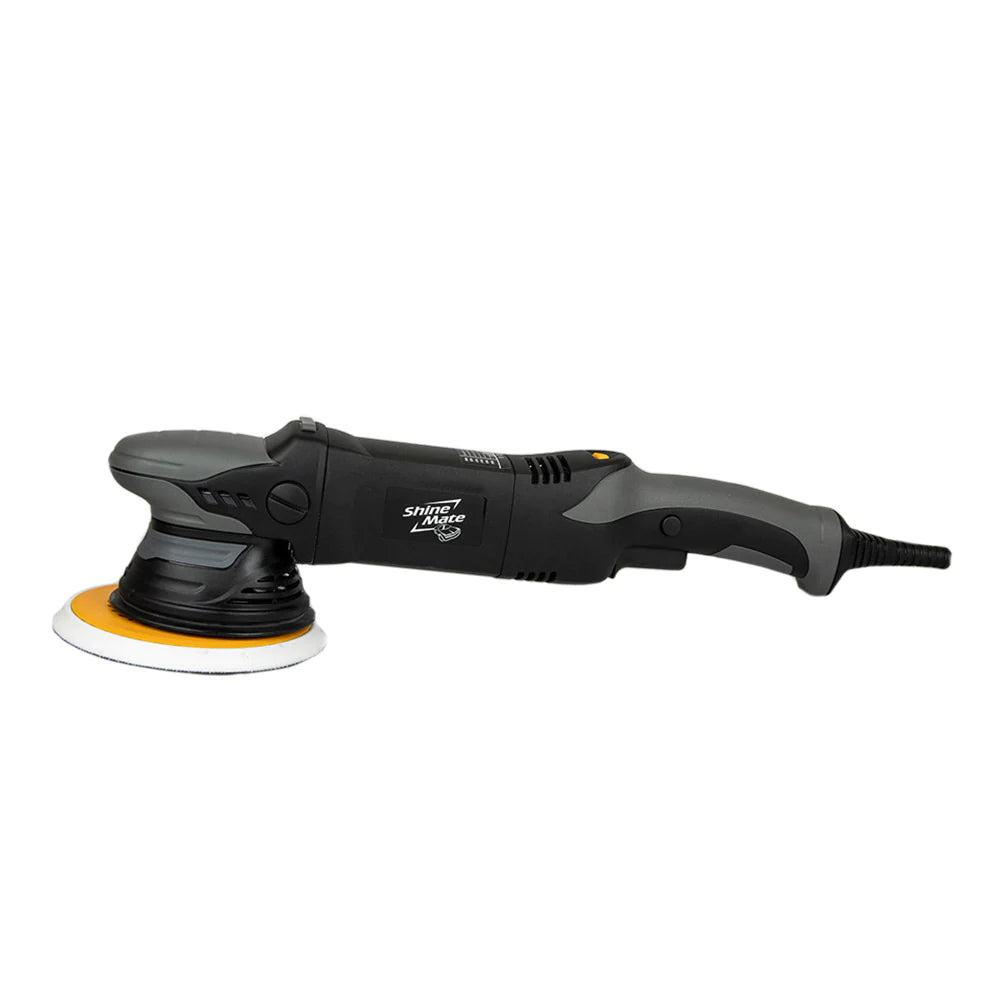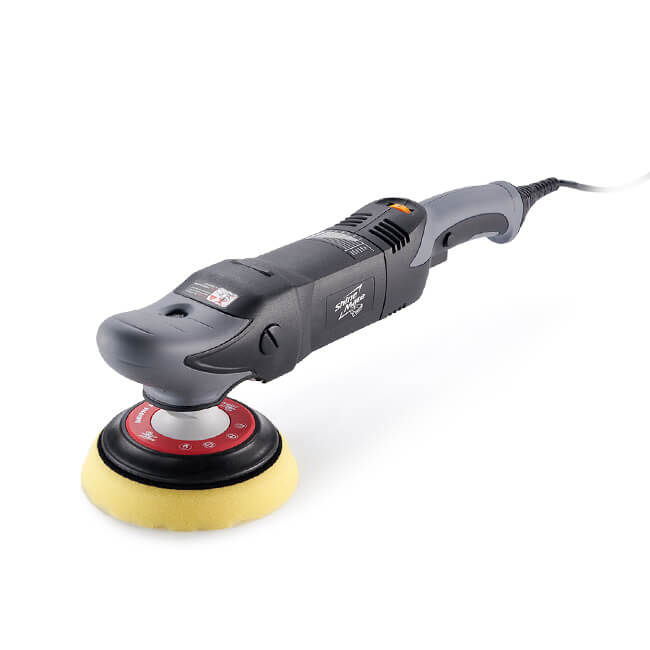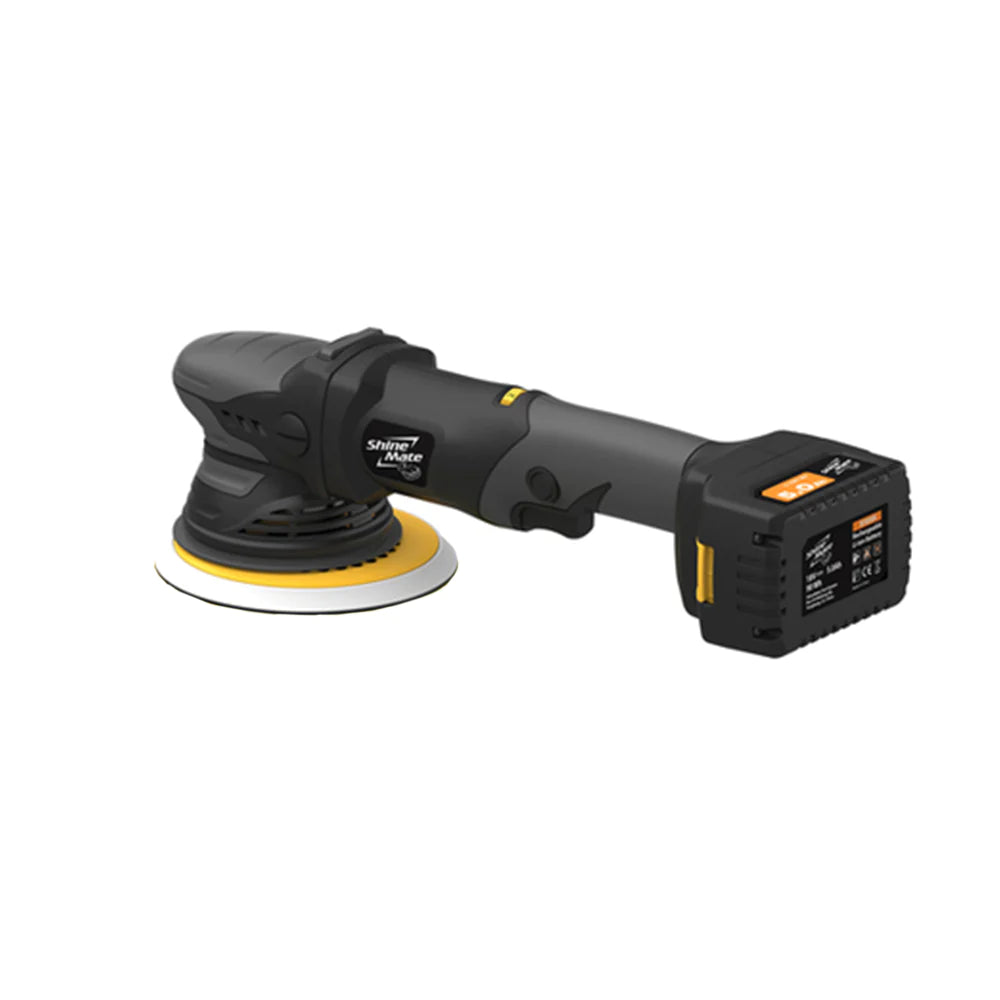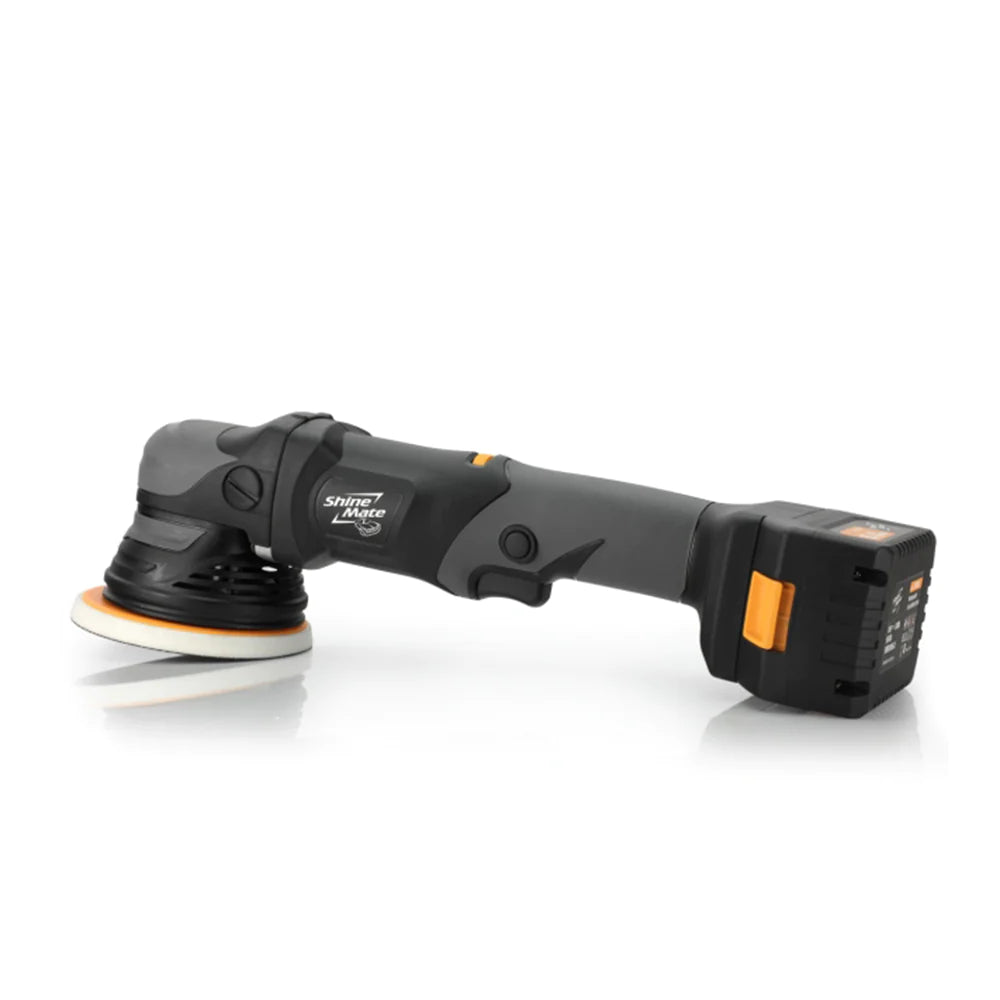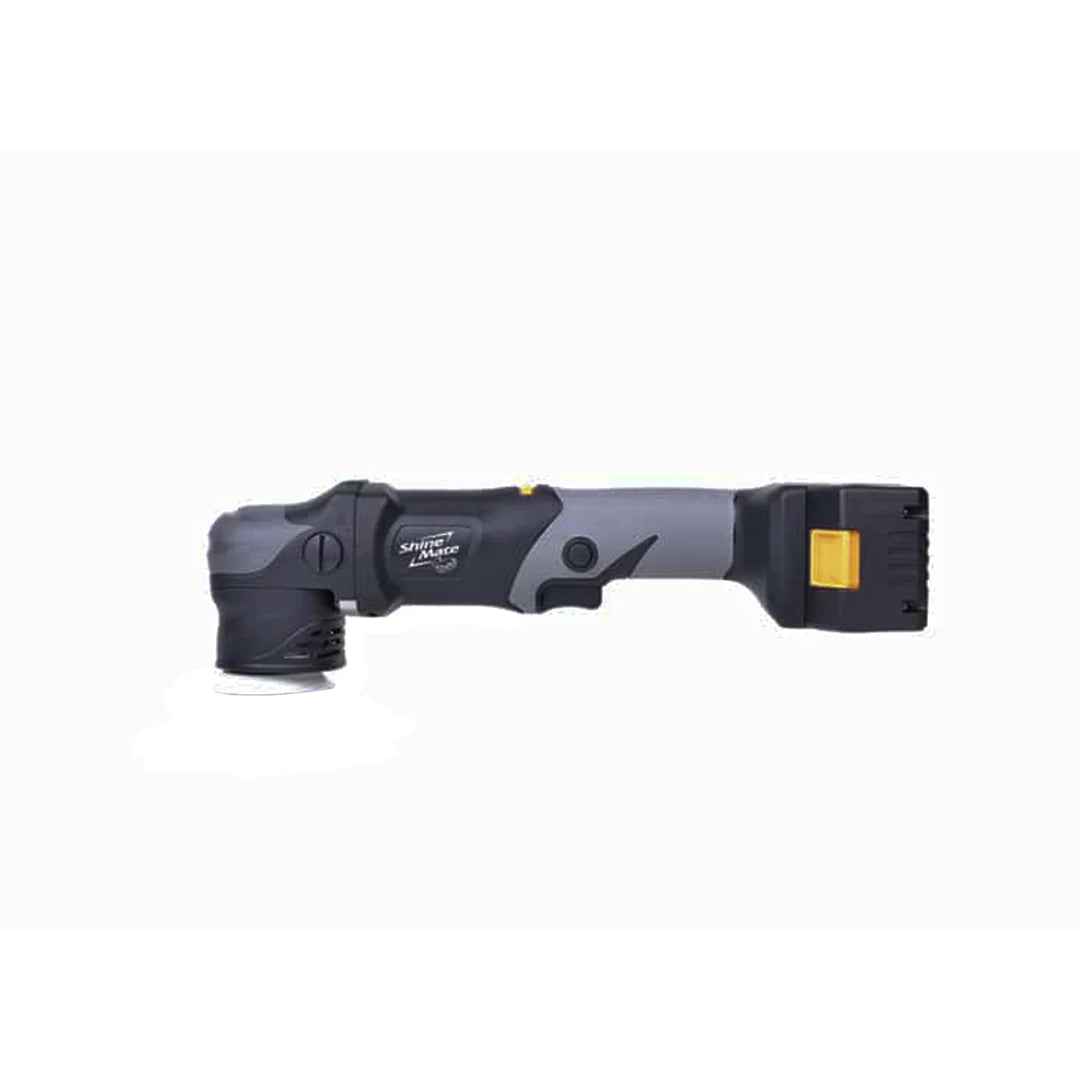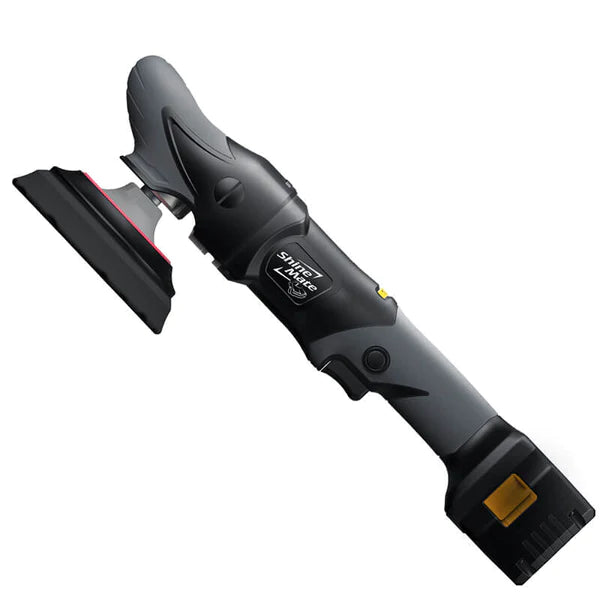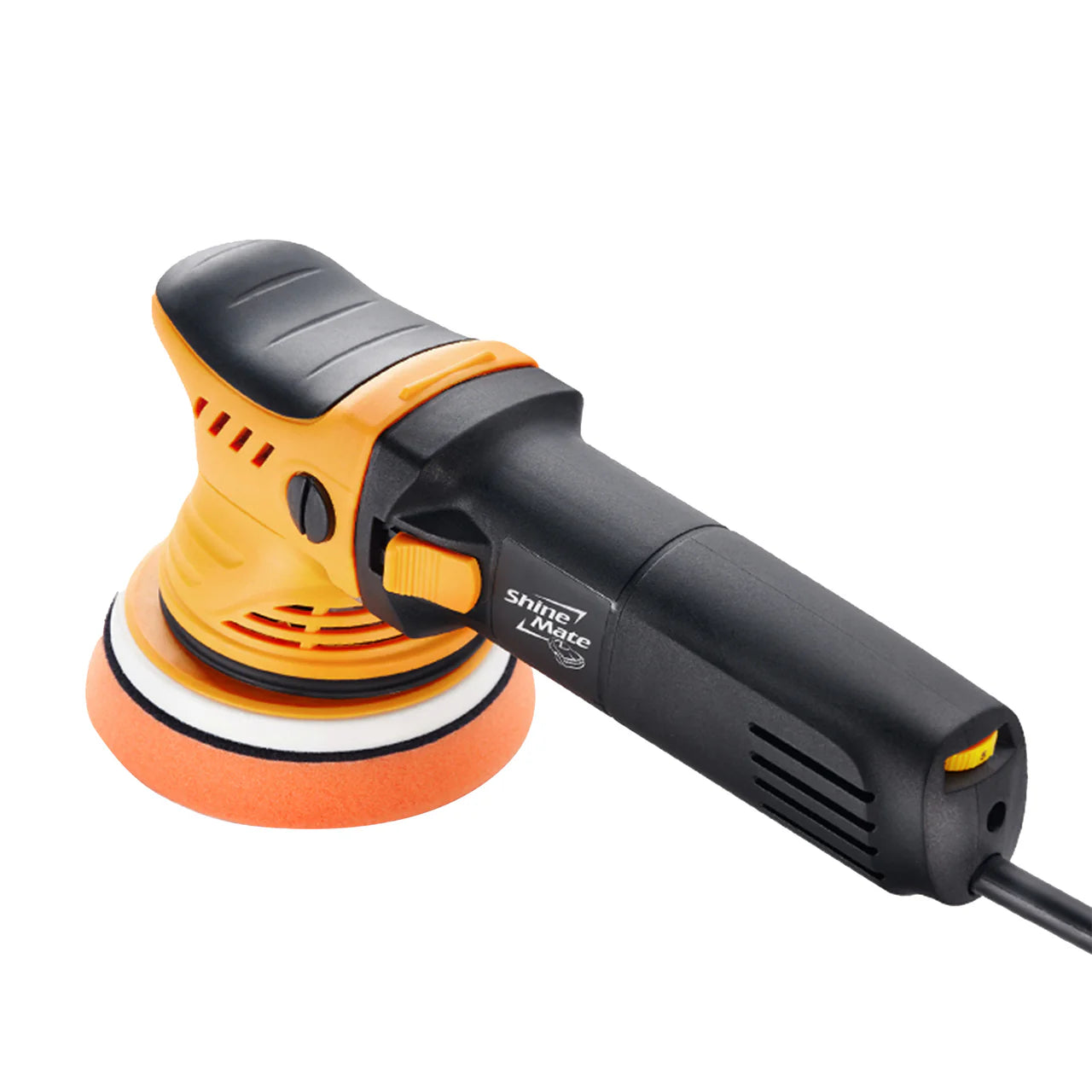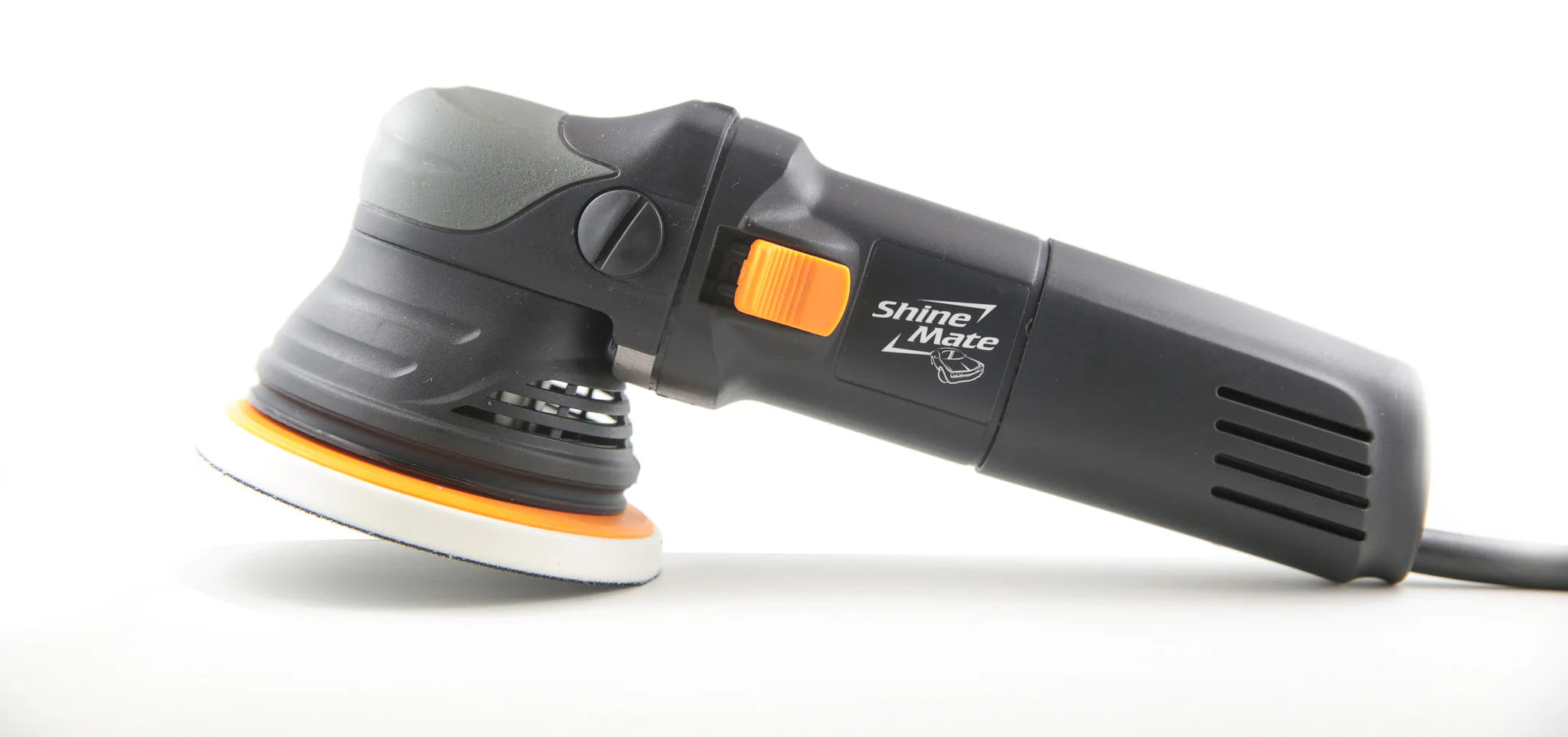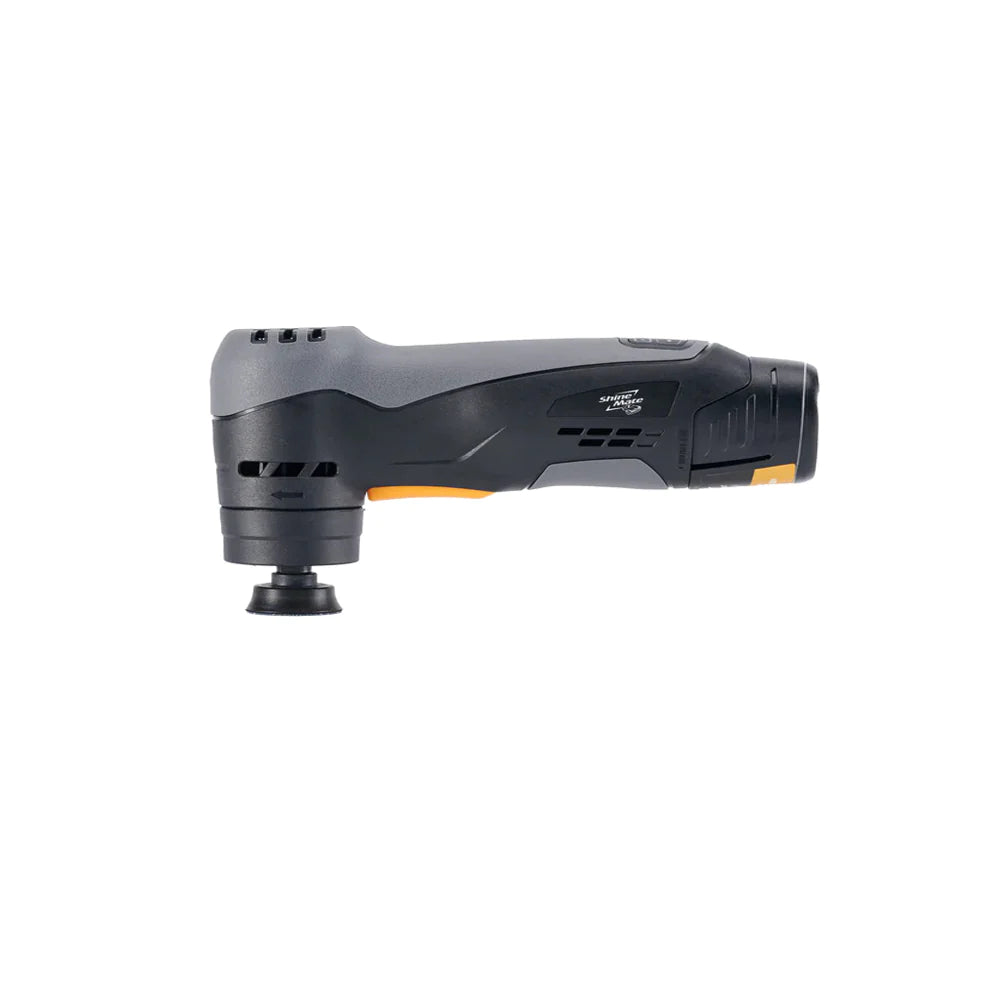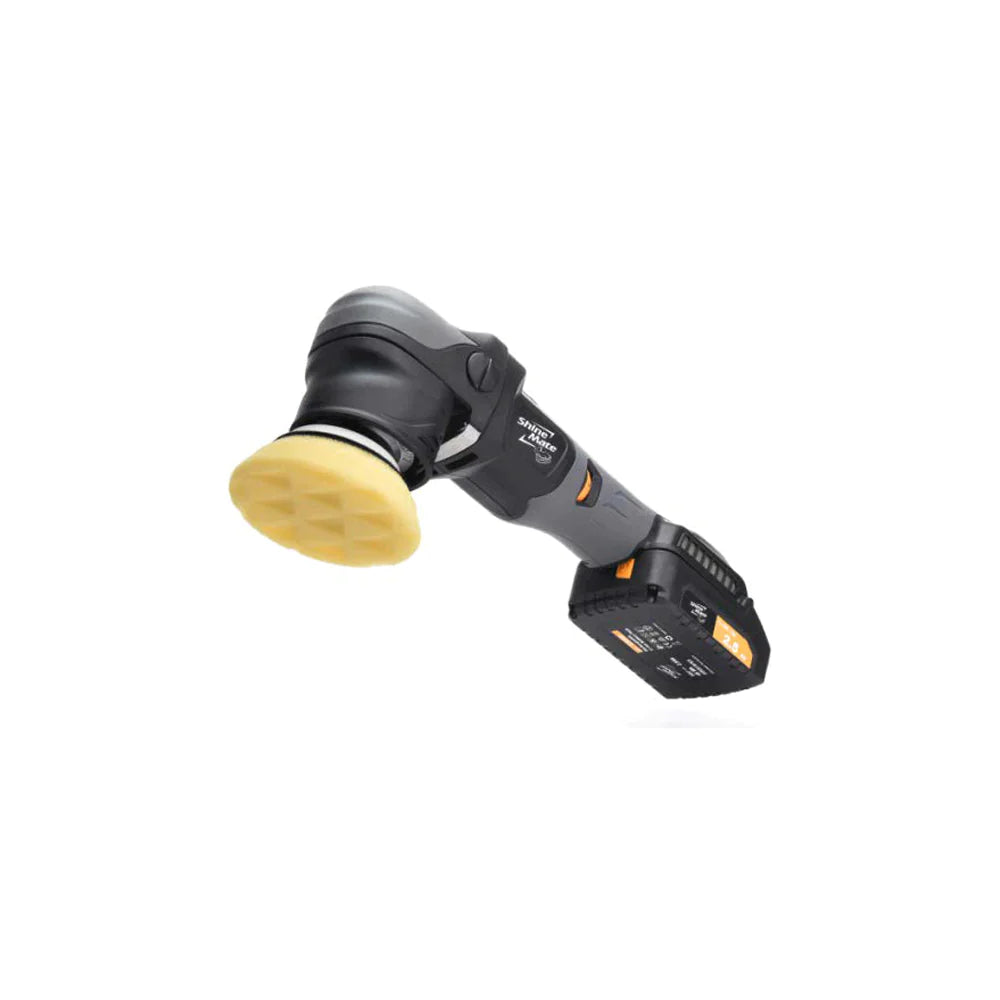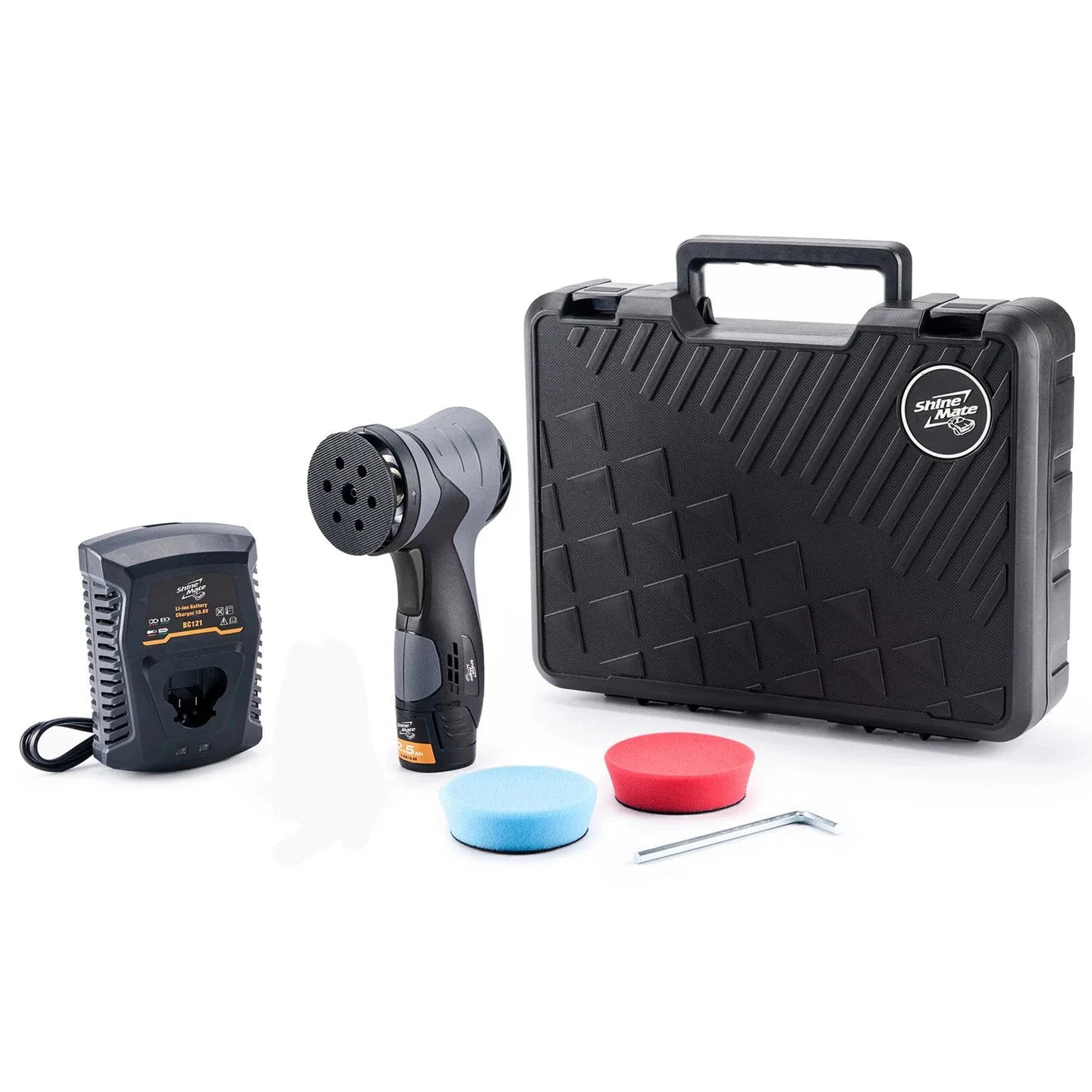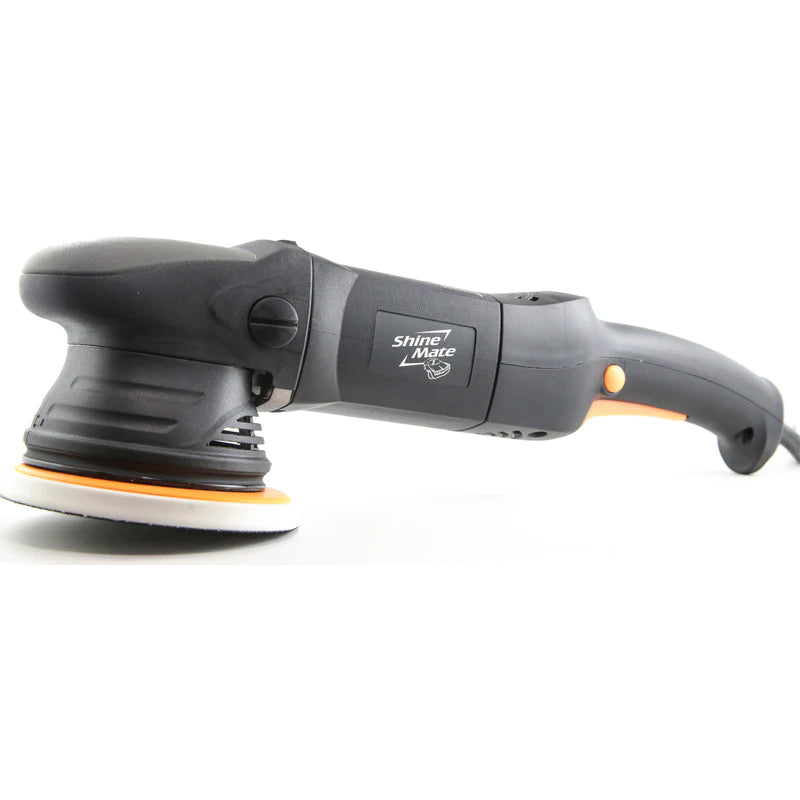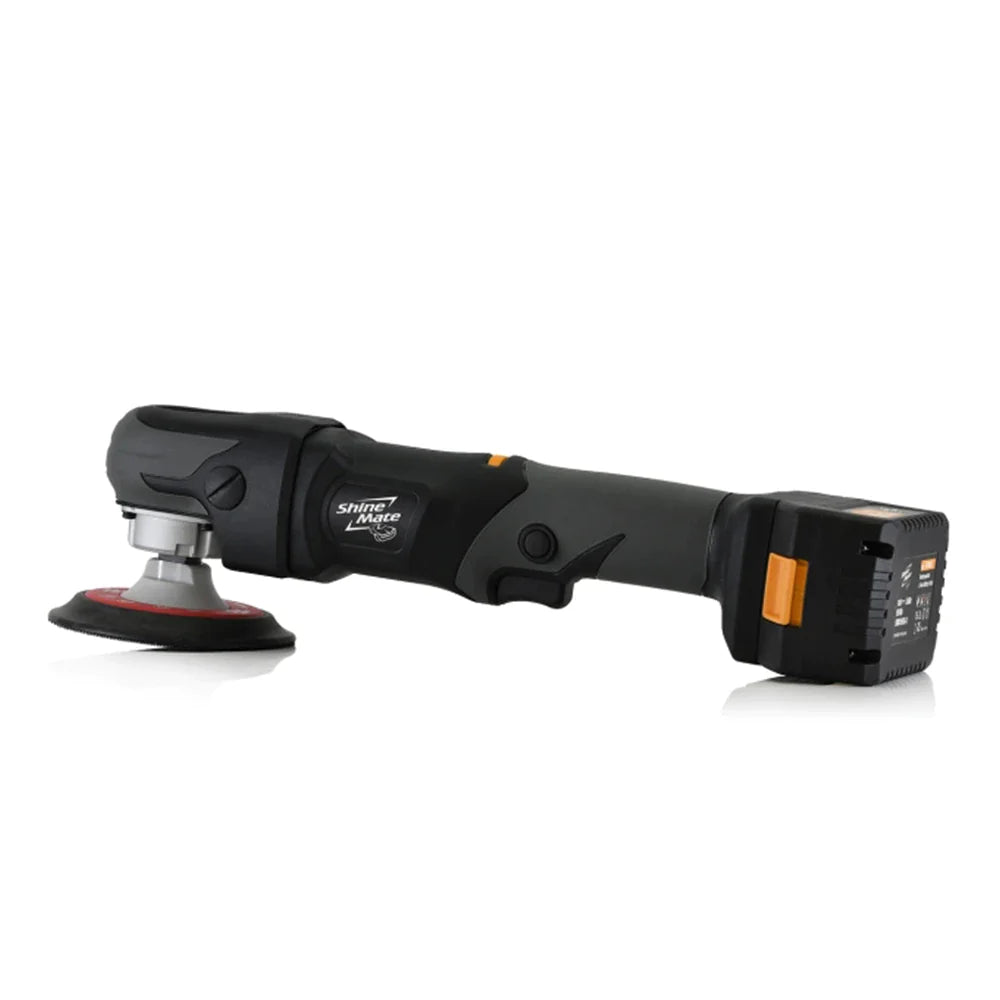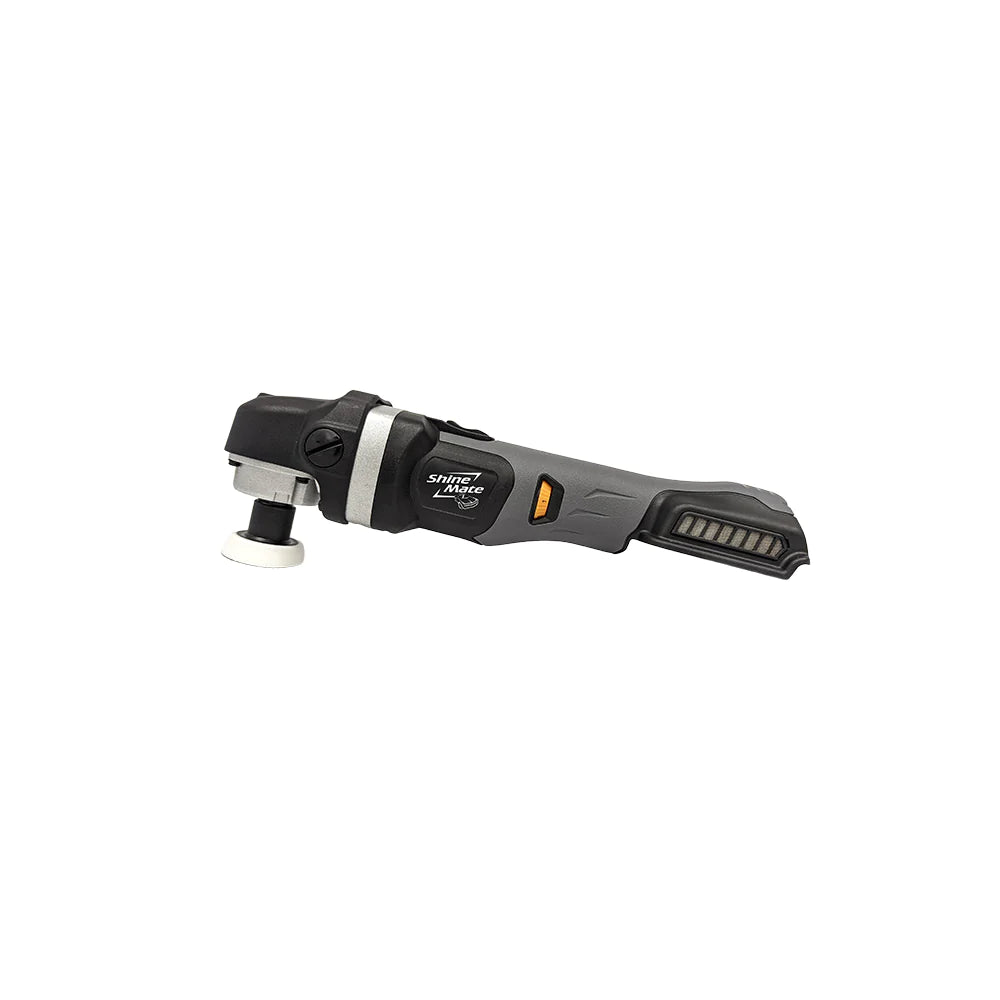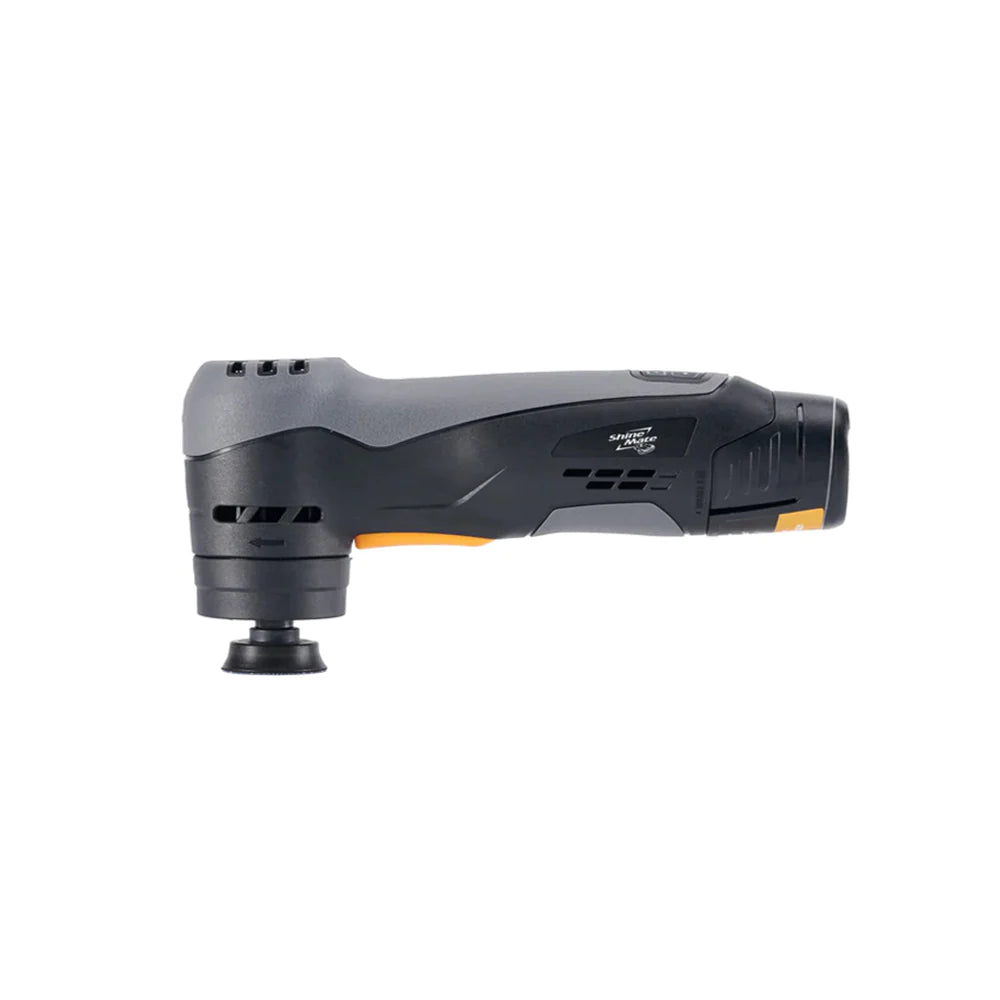
Frequently Asked Questions
-
Using a car polisher isn't as intimidating as it might seem - in fact, it's pretty straightforward if you follow a few simple steps.
Prepping Your Paint
Before you start polishing, it's crucial to properly prepare and decontaminate your paint. This step helps remove contaminants like iron and tar, preventing them from getting trapped in the pad and causing damage during the polishing process.
Step-by-step Guide to Using Your Car Polisher
1. Choose the right pad and compound:
Assess your vehicle's condition and select the least aggressive combination to start (e.g. finishing pad with a finishing compound). If needed, you can gradually move up to more aggressive options based on your results.
2. Attach the pad securely:
Make sure the pad is centered on the polisher to prevent imbalance and ensure smooth operation.
3. Apply polish/compound:
Add a few pea-sized drops to your pad. For a fresh pad, apply 4-6 drops to prime it, then use 3-4 drops for ongoing applications.
4. Set the appropriate speed:
If you're using a variable-speed polisher, start at a low speed to spread the compound evenly, then increase to your working speed. Typically, speeds between 4-6 are used for cutting, while 3-4 work best for finishing.
5. Work in small sections:
Stick to an area around 16-24 inches by 16-24 inches to ensure even and effective polishing.
6. Polish with consistent motions:
Place the polisher against the paint and turn it on. Start with vertical passes, covering the entire work area, then follow with horizontal passes over the same section. One full cycle of both directions counts as a single pass. We recommend doing 3-4 passes before wiping away residue with a microfiber cloth and inspecting the results under a car detailing light.
7. Let the buffer do the work:
Avoid applying excessive pressure as it won't improve results and may even damage the car polisher, pad or vehicle. Use light to medium pressure at most. If you're not getting the desired level of correction, switch to a more aggressive pad or compound instead of pressing harder.
Remember these steps are a simple guideline to car polishing, if you need further advice please email us. -
Our selection of car polishers makes it easy to find the perfect machine for your needs. Whether you're looking for a mini polisher for precise detailing or a high-powered buffing machine for professional results, we have you covered!
Beyond our top-quality car polishers, we also offer a range of machine spare parts to keep your equipment running smoothly. Our customer support team is always available to assist with troubleshooting, repairs or warranty concerns, ensuring you have the help you need every step of the way.
Each of our buffing machines is built with fully machined internals, avoiding cast-made components for superior durability. This commitment to quality ensures exceptional performance, reliability and safety in every machine.
Whether you're a car enthusiast or a professional detailer, you can trust us to provide the best car polishers to take your car care routine to the next level.
-
When choosing the right car polisher, several factors come into play. Your experience level, your vehicle's specific needs, and how often you plan to use the machine will all influence your decision. Let's break down the main types and their best applications:
Dual-Action Car Polishers:
Also knows as DA polishers or random orbital polishers, these are the most beginner-friendly option. They use a combination of rotating and oscillating motions, generating less head on the surface, which makes them much safer and easier to handle. Whether you're a car enthusiast or a professional, a DA polisher is a great tool for maintaining or enhancing your vehicle's finish.
DA polishers vary in backing plate size and throw. The "throw" refers to how far the pad moves from the center axis. For beginners looking for a well-rounded machine, a 12mm or 15mm throw with a 5" backing plate is ideal as this offers the most versatility amongst car polishers.
Rotary Buffing Machines:
Rotary polishers have been a staple in the industry for years. As the original type of car polisher, they remain the preferred choice for many professionals. Unlike DA car polishers, rotary buffing machines have a direct-drive motor that spins the pad on a fixed axis, providing more cutting power. This makes them highly effective at removing deep scratches and heavy defects.
However, they require skill and experience to use properly as they generate more heat, improper handling can lead to paint damage, swirl marks or holograms. They're best suited for experienced detailers tackling severe imperfections that require heavy cutting capabilities.
Mini Polishers:
Mini polishers are compact versions of both DA and rotary machines, designed for precision work in tight spaces. They're perfect for polishing around mirrors, door handles, trim and other intricate areas wher a full-sized polisher can't reach.
Cordless Polishers:
Available in rotary, DA and mini versions, cordless polishers eliminate the hassle of power cords. They provide the freedom to polish anywhere without worrying about finding an outlet, making them a convenient portable option. -
Choosing your car polisher all depends on your specific needs and the tasks you plant to perform! Here is a small breakdown of the pros and cons of each size of polisher:
Mini Polishers:
Pros: Great control in small areas, lighter, easier to handle and can use different size pads (1"-3").
Cons: Not suitable for large surfaces, takes longer to cover larger areas.
5" Car Polishers:
Pros: Versatile, can handle both small and large areas reasonably well. Most common and popular size of buffing machine.
Cons: May not reach very tight spots as well as a 3" polisher, can be difficult to use when unfamiliar with rotary polishers.
6" Car Polishers:
Pros: Covers large areas quickly, efficient for bigger jobs.
Cons: Far less manoeuvrable in tight spaces and heavier than 5" and mini polishers.
Alongside our range of car polishers we also offer car polishing kits, finishing pads, cutting pads, cutting compounds, finishing compounds and all-in-one compounds.


